January – laver

- The laver from Shinan is raised in the cleanest sea in front of Shinan with the cultivation technique inherited from our ancestors, so that it maintains the natural freshness within. The clean mud flats and the clear sea are our county's pride and our fishermen's heartful efforts. You can feel the taste of the southern flavor in rock laver, seasoned laver and laver for rolls.
- Production status of our county
- Production capacity: 1,338 fishery households 5,261ha (106천백-106000 106 billion KRW)
- Production: 9,120,000 genuses (28,104 million KRW)
- Sales period: all-year
Laver is full of essential amino acid. Laver has protein, carbohydrates, ash, and lipid (in the order of content) and especially contains 44% protein . The value of protein depends not only on its amount but also on the balance of the essential amino acids.
Laver has 8 out of 10 essential amino acids including methionine. Therefore, it is very good food for consuming amino acids compared to other foods. Laver also has sufficient minerals. Mineral serves as the material for enzyme involved in the metabolism of the body and the laver has almost all necessary minerals such as phosphorus, magnesium, sodium, potassium, calcium, silicon, iron, mangan, etc.
Laver has a great amount of iron necessary for young women. Human body contains about 3g of iron and most of it is contained in hemoglobin of the red blood cells, myoglobin of the muscles, red pigment protein in the muscle cells and ferritin of the liver.
Laver has 8 out of 10 essential amino acids including methionine. Therefore, it is very good food for consuming amino acids compared to other foods. Laver also has sufficient minerals. Mineral serves as the material for enzyme involved in the metabolism of the body and the laver has almost all necessary minerals such as phosphorus, magnesium, sodium, potassium, calcium, silicon, iron, mangan, etc.
Laver has a great amount of iron necessary for young women. Human body contains about 3g of iron and most of it is contained in hemoglobin of the red blood cells, myoglobin of the muscles, red pigment protein in the muscle cells and ferritin of the liver.
February - Heuksan Skate
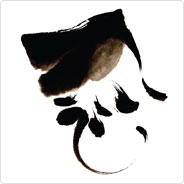
- Heuksan skates are known to have full and soft flesh and property for treating phlegm, so that it is effective for bronchial asthma and improvement of digestion function.
It is a special fish that can be eaten by fermentation without causing food-poisoning and it has high-protein and low-fat and is good for hangover. From October to March next year, it tastes the best.- Our county's production status
- Production capacity: 30 fishery households
- Production: 62 tons (about 3.1 billion KRW)
- Sales period: all year
The sharply tangy taste in the mouth and the unique smell that strongly penetrates the neck and the nose remind us of the old nostalgia. Especially, the high-protein and low-fat food is effective at easing the hangover and removing the phlegm and the sticky mucus from fermentation is widely known to improve stamina. Those who try the fermented skate for the first time cannot close the mouths surprised at its tangy taste. However, the gourmet who knows about the flavor of skate come back to taste it, though it is expensive, because they cannot forget the taste.
Skates are the only fish that can be eaten by fermentation. Thus, this is the fish that can be eaten even in the deep mountain during summer. If you want to taste the real flavor of the skate as it is, try the sliced raw skate. Another special delicacy is to eat 3 kinds together; well-fermented Kimchee, boiled pork and skate together in one bite.
Skates are the only fish that can be eaten by fermentation. Thus, this is the fish that can be eaten even in the deep mountain during summer. If you want to taste the real flavor of the skate as it is, try the sliced raw skate. Another special delicacy is to eat 3 kinds together; well-fermented Kimchee, boiled pork and skate together in one bite.
March – Ganiami
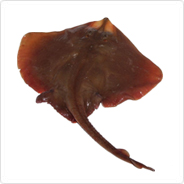
- Ganiami are nutritious food good for those who are in the recovering stage from an illness or have weak bodies. They enhance the stamina and anti-cancer effects and thus are good for preventing . lifestyle-related diseases.
- Our county's production status
- Production capacity : 50 fishery households
- Production : 200 tons (about 2 billion KRW)
- Sales period: all-year
Ganiami are small fish, belonging to the species of skate and inhabiting in mud flats but also in the mixture of rocks and mud flats. They inhabit about 20m~120m deep in the sea in the wide range of the depth of the water. There are also many kinds of them. Red skates eat small fish such as shrimps, squids, anchovies, etc. The ways to distinguish rays and red skates are that rays have 1~3 long thorns in the tails while red skates have thorn-like teeth of sharks densely lined up in 4~5 lines and thin bodies compared to the thick bodies of rays.
Ganiami are nutritious food good for those who are in the recovering stage from an illness or have weak bodies. They enhance stamina and anti-cancer effects and thus are good for preventing lifestyle-related diseases. As leading recipes, there are red skate stew, red skate mixed with vegetables, sliced raw red skate, etc. and among all the other recipes, the red skate mixed with vegetables is the best and the most popular one.
Ganiami are nutritious food good for those who are in the recovering stage from an illness or have weak bodies. They enhance stamina and anti-cancer effects and thus are good for preventing lifestyle-related diseases. As leading recipes, there are red skate stew, red skate mixed with vegetables, sliced raw red skate, etc. and among all the other recipes, the red skate mixed with vegetables is the best and the most popular one.
April - Rockfish
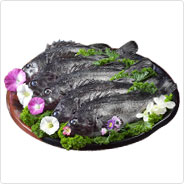
- Rockfish takes up 90% of Korea's marine fish aquaculture along with flatfish and because of its firm and chewy flesh, it is popular to Koreans. It is effective for fatigue recovery, improvement of liver function and prevention of aging.
- Our county's production status
- Production Capacity: 470 fishery households
- Production: about 4,640 tons (about 55,680 million KRW)
- Sales period: all-year
Rockfish have low tendency to move its habitats, and the flesh is tasty and popular as sliced raw fish. The hot stew mixed with vegetables is spicy and has clean flavor.
It is good at adapting itself to the environment and grows fast. It is cultivated in a large scale in the clean sea of the Heuksan area. It inhabits in the coastal rock and reef areas. Spawned and hatched in Spring, the baby fish lead floating lives for 20~30 days and then, go to live in the deep water. The young fish live sticking to physical objects such as rocks and reefs for a while and then, dig into the mud flat. Because of the tasty flesh, it has been eaten from a long time ago and because of its good adaptation to the environment, it has high potential for artificial cultivation. it is widely distributed in Korea, China and Japan and in Korea, it inhabits in rock and reef areas of the South and the West Seas.
The spicy stew mixed with vegetables has clean taste and is good for removal of hangover and as the representative dishes with rockfish, there are sliced raw rockfish, steamed rockfish, raw rockfish mixed with vegetables, and spicy rockfish stew.
It is good at adapting itself to the environment and grows fast. It is cultivated in a large scale in the clean sea of the Heuksan area. It inhabits in the coastal rock and reef areas. Spawned and hatched in Spring, the baby fish lead floating lives for 20~30 days and then, go to live in the deep water. The young fish live sticking to physical objects such as rocks and reefs for a while and then, dig into the mud flat. Because of the tasty flesh, it has been eaten from a long time ago and because of its good adaptation to the environment, it has high potential for artificial cultivation. it is widely distributed in Korea, China and Japan and in Korea, it inhabits in rock and reef areas of the South and the West Seas.
The spicy stew mixed with vegetables has clean taste and is good for removal of hangover and as the representative dishes with rockfish, there are sliced raw rockfish, steamed rockfish, raw rockfish mixed with vegetables, and spicy rockfish stew.
May – Pomfret
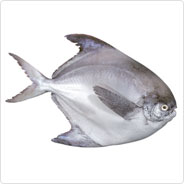
- The body of pomfret's body is sliver with the tinge of blue and the stomach is white and the back of the head has sinuated stripes. Their small and round scales are very easy to fall. They are produced mainly in the areas of Jido, Jungdo, Imja and Bigeum from April to August.
- Our county's production status
- Production capacity: 300 fishery households
- Production: about 500 tons (6 billion KRW)
- Sales period: June ~ August
Not to mention the good taste, but pomfret has resilient flesh as if it were about to bounce and do not have the usual stench of a fish. Because of the small mouth and the thin and diamond-shaped body, it looks like tropical fish in aquarium and the pale body color gives the neat and cool impression. The white-flesh pomfret has lean flesh and thus, it tastes neat and the aftertaste is refreshing. Since it does have the usual fishy smell, those who avoid fish because of the smell can enjoy this fish and due to the lack of small thorns, children can enjoy it easily.
In addition, because of the many available recipes including roasting, frying, and boiling down, pomfret can be served in various styles so you won't be sick of it even it come up on the table often.
Especially, laying sliced season-fresh potatoes in summer on the bottom of the pot, and then, laying the plump pomfret from the spawning season with chopped fresh green peppers and then, adding seasoned hot-pepper paste, you can enjoy the boiled-down pomfret which can get your lost appetite back.
It is known to be effective for activating the intestine movement, so it is good for weak bodies and due to its detoxication effect, the personality of the person who eats the pomfret can be smoothed as well.
In addition, because of the many available recipes including roasting, frying, and boiling down, pomfret can be served in various styles so you won't be sick of it even it come up on the table often.
Especially, laying sliced season-fresh potatoes in summer on the bottom of the pot, and then, laying the plump pomfret from the spawning season with chopped fresh green peppers and then, adding seasoned hot-pepper paste, you can enjoy the boiled-down pomfret which can get your lost appetite back.
It is known to be effective for activating the intestine movement, so it is good for weak bodies and due to its detoxication effect, the personality of the person who eats the pomfret can be smoothed as well.
June - Abalone
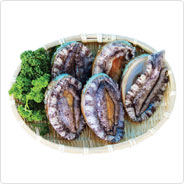
- Abalone is divided by the bluish black and firm flesh male and red and soft female. Male abalone is good for sliced raw fish and female one is proper for cooking. Abalone is fed with seaweeds such as kelp, seaweed, gulfweed, etc. and the dark organ means that it digests the seaweed, which is a healthy food.
- Our county's production status
- Production capacity: 450 fishery households
- Production: about 300 tons (15 billion KRW)
- Sales period: all year
As the old royal cuisine could not be discussed without abalone, abalone has been excellent qualitatively in terms of taste and nutrition compared to other seafoods.
In the oriental medicine, abalone was called Seokgyeolmyeong and it can fix the illness of being blind with normal-looking eyes and if it is eaten for a long time, the body becomes light, the eyes become bright, and the hearing can be improved. Thus, it was called the young gentleman of the thousand-ri cassia seed.
Abalone has nothing to be thrown away from horns to internal organs and there are various recipes using abalone. The most popular one is the sliced raw abalone; wash the abalone and slice the abalone thinly to pick up easily. The custom is to eat this along with the internal organs (so called Gewoo) which can be excretion of abalone. Only after this was taken, you can claim that you have eaten the abalone.
It is mainly produced in Heuksan area of Shinan county and since the shell has no foreign substances stuck, its merchandise value is high and it is full of various vitamins, minerals, protein, and so on.
In the oriental medicine
Abalone has nothing to be thrown away from horns to internal organs and there are various recipes using abalone. The most popular one is the sliced raw abalone; wash the abalone and slice the abalone thinly to pick up easily. The custom is to eat this along with the internal organs (so called Gewoo) which can be excretion of abalone. Only after this was taken, you can claim that you have eaten the abalone.
It is mainly produced in Heuksan area of Shinan county and since the shell has no foreign substances stuck, its merchandise value is high and it is full of various vitamins, minerals, protein, and so on.
July – Croaker

- Croakers are the most delicious in summer right before the spawning season and the stew is generally enjoyed on the hot days as the food that helps to overcome the heat. Fleshes, bones, and internal organs are separated and then, fleshes are eaten as sliced raw fish and air bladders, which can be used as glue, are eaten sliced and dipped in salt.
The hot stew tastes thicker and richer as it is boiled down longer. The stew is cooked with bones and internal organs together in a pot with lots of water. After it is boiled for a while, add seasonings. For croakers, big ones have eggs and taste better.- Our county's production status
- Production capacity: 180 fishery households
- Production: about 100 tons (3 billion KRW)
- Sales period: June ~ August
According to the oriental medicine, croakers taste sweet and their natural quality is warm. Thus, they have been used to increase the energy in the internal organs that becomes cold during spring and summer and to strengthen the bones.
According to 'Jasaneobo', croakers are a little crooked and have yellowish white body with the bluish black back. They taste neat and sweet and can be enjoyed either raw or cooked. However, the dried ones are the best for health and have been used as a dietary supplement.
Because they are promptly digested and absorbed, it is known to be specially effective for children's growth and elderly patients' health recovery. The air bladders of croakers are quite expensive and when the finely chopped ones are stirred in the heat, they become beads like pearls and these are called 'glue beads' and used as materials for restorative medicine. It is good for weak bodies and fatigue recovery and stops coughing by protecting the body from being dry and prevents pyemia and controls spitting-blood, nose-bleeding, and diarrhea.
It is known to enhance memory and learning ability, prevent hardening of the arteries by lowering the cholesterol in the blood, blood-clotting, and dementia. And also to be very effective for anti-cancer activities and contain sufficient natural EPA and DHA.
According to 'Jasaneobo', croakers are a little crooked and have yellowish white body with the bluish black back. They taste neat and sweet and can be enjoyed either raw or cooked. However, the dried ones are the best for health and have been used as a dietary supplement.
Because they are promptly digested and absorbed, it is known to be specially effective for children's growth and elderly patients' health recovery. The air bladders of croakers are quite expensive and when the finely chopped ones are stirred in the heat, they become beads like pearls and these are called 'glue beads' and used as materials for restorative medicine. It is good for weak bodies and fatigue recovery and stops coughing by protecting the body from being dry and prevents pyemia and controls spitting-blood, nose-bleeding, and diarrhea.
It is known to enhance memory and learning ability, prevent hardening of the arteries by lowering the cholesterol in the blood, blood-clotting, and dementia. And also to be very effective for anti-cancer activities and contain sufficient natural EPA and DHA.
August – Sea Bass
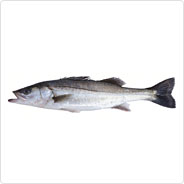
- As a seawater fish from the species of sea bass, it has the elongated body, the deep blue-green back and the silver-white stomach. It eats crustacean, shellfish, and small fish and is an offshore fish distributed in Korea, China, Taiwan and Japan.
- Our county's production status
- Production capacity: 120 fishery households
- Production: about 80 tons (2.4 billion KRW)
- Sales period: August ~ September
Fishermen say that "the best sea bass is the freshly caught one." When the freshly caught sea bass is sliced thinly, the clear, firm, and smooth flesh can be seen and the taste is better than blowfish or bream.
According to chapter in written in 1688~1704, "sea bass makes the skin smooth and muscles and bones strong, eases the stomach and cures edema" and the recommended recipe is raw 'namasu (seasoning or pickling the fish with vinegar and soy sauce),'
In addition, written in 1830~1844 records that "the precious thing for the summer, nothing is better than this." It lowers the cholesterol level of the blood, prevents hardening of the arteries, blood-clotting, and dementia and is effective for anti-cancer activity and hangovers.
According to
In addition,
September - Octopus
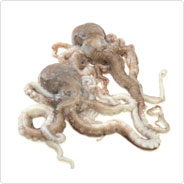
- Octopus has a special ingredient called taurine and it generates very unique flavor.
The special amino acid, taurine, prevents the increase of blood cholesterol, whitens the skin and is best for hangover.- Our county's production status
- Production Capacity: 120 fishery households
- Production: about 80 tons (2.4 billion KRW)
- Sales period: August ~ September
In the old days, a farmer fed octopus to a cow lying down due to the dehydration and then, "the cow stood up right away", says the story.
It seems that it emphasizes the point that octopus is so good to stamina.
Octopus is effective to prevent the cholesterol and due to its lack of fat, it is especially good for female's skin care.
In addition, taurine, one of amino acids, is largely contained and it makes the blood clean, helps to develop child's growth, especially the growth of the brain, prevents lifestyle-related diseases and is good for reinforcement of intestines and pancreas, and metabolism.
The majority of live octopus is protein and especially, it has a great amount of essential amino acids, so that it is very nutritious. Amino acids constituting proteins are like the current running in a battery and they serve the delivery function in the human body. Because of taurine, protein, calcium, phosphorus, iron and vitamins, it is effective at controlling the amount of cholesterol and preventing anemia.
It seems that it emphasizes the point that octopus is so good to stamina.
Octopus is effective to prevent the cholesterol and due to its lack of fat, it is especially good for female's skin care.
In addition, taurine, one of amino acids, is largely contained and it makes the blood clean, helps to develop child's growth, especially the growth of the brain, prevents lifestyle-related diseases and is good for reinforcement of intestines and pancreas, and metabolism.
The majority of live octopus is protein and especially, it has a great amount of essential amino acids, so that it is very nutritious. Amino acids constituting proteins are like the current running in a battery and they serve the delivery function in the human body. Because of taurine, protein, calcium, phosphorus, iron and vitamins, it is effective at controlling the amount of cholesterol and preventing anemia.
October - Shrimp
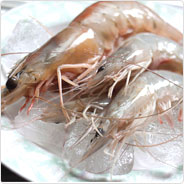
- White shrimps are the low-calorie and high-protein seafood and good for stamina and children's growth, and the sufficient vitamins are good for the prevention of lifestyle-related diseases. The sweet and chewy taste of the raw white shrimp dipped in the mixture of vinegar and hot-chilly paste is just beyond the imagination. Accompanied with a shot of Soju, you would feel like you just had a bite of the west sea.
- Our county's production status
- Production capacity: 130 fishery households
- Production: about 1,200 tons (15.6 billion KRW)
- Sales period: October ~ November
Shrimps turn red when boiled or roasted and it is because the pigment protein called astaxanthin contained in the shell turns red when heated.
The king shrimps produced in the west sea are caught a lot in the clean sea of Shinan county and with the low salt concentration, the shrimps tastes better than the ones caught in the other areas. Thus, it is very popular as raw fish or for roasting with salt.
The king shrimps are raised by inputting the baby shrimps in the sea in May, raising them as big as 10~20cm and harvesting them from the end of September to the middle of November. It is known to include a great amount of protein and chitosan effective at the prevention of cancer and thus, is very popular for a healthy food.
It is known to be excellently effective at the prevention of skin aging, the removal of foreign substances inside the body, and the prevention of various lifestyle-related diseases including high blood pressure and its sufficient vitamins are good for children's growth and development and skin care.
The king shrimps produced in the west sea are caught a lot in the clean sea of Shinan county and with the low salt concentration, the shrimps tastes better than the ones caught in the other areas. Thus, it is very popular as raw fish or for roasting with salt.
The king shrimps are raised by inputting the baby shrimps in the sea in May, raising them as big as 10~20cm and harvesting them from the end of September to the middle of November. It is known to include a great amount of protein and chitosan effective at the prevention of cancer and thus, is very popular for a healthy food.
It is known to be excellently effective at the prevention of skin aging, the removal of foreign substances inside the body, and the prevention of various lifestyle-related diseases including high blood pressure and its sufficient vitamins are good for children's growth and development and skin care.
November – Paste Shrimp

- For salt-pickled shrimps, it is still popular to catch shrimps in June in the offshore of Shinan and Youngkwang in Jolla South. Though the cheap Chinese salt-pickled shrimps are thrown at us, the shrimps caught in June have maintained the high prices.
The sea prawns caught from June to July are plump and have the milky color and are considered the best and the pickled shrimps with these prawns are called "yukjeot".- Our county's production status
- Production capacity: 300 fishery households
- Production: 50,000 drums (30 billion KRW)
- Sales period: all-year
Depending on the spawning period, paste shrimps are divided into shrimps passing winter (winter shrimp) and shrimps passing summer (summer shrimp).
Paste shrimps die one month after the spawning and these shrimps are of the same kind but have different lives.
Winter shrimps spawn from the end of July to early October, stop growing from December to March next year, start the growth from April, spawn from May to June in lunar calendar and then, die.
Summer shrimps are the paste shrimps that have passed the winter and spawn from early May to early July and during the summer, because of the high water temperature, they spawn from the end of July to early October and then die.
Ohjeot and yukjeot, people's favorites, are the salt-pickled shrimps that are caught in May or June in lunar calendar, after passing winter, right before the spawning and thus are full of eggs.
The salt-pickled shrimps help the digestion of food and when eaten with pork, they do not cause any upset stomachs. They are mainly used for making Kimchi and Kimchi made with the salt-pickled shrimps tastes excellent.
Paste shrimps die one month after the spawning and these shrimps are of the same kind but have different lives.
Winter shrimps spawn from the end of July to early October, stop growing from December to March next year, start the growth from April, spawn from May to June in lunar calendar and then, die.
Summer shrimps are the paste shrimps that have passed the winter and spawn from early May to early July and during the summer, because of the high water temperature, they spawn from the end of July to early October and then die.
Ohjeot and yukjeot, people's favorites, are the salt-pickled shrimps that are caught in May or June in lunar calendar, after passing winter, right before the spawning and thus are full of eggs.
The salt-pickled shrimps help the digestion of food and when eaten with pork, they do not cause any upset stomachs. They are mainly used for making Kimchi and Kimchi made with the salt-pickled shrimps tastes excellent.
December – Gray Mullet
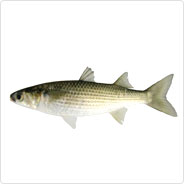
- Gray mullets eat mud to absorb organisms into the body and then discharge the mud again and the one that plays an important part in this case is the firm lump called gray mullet's bellybutton looking like a bead in the beginning of the stomach, which prevents the lifestyle-related circulatory diseases (hardening of the arteries, brain stroke, etc.), improves the brain performance and the absorption of calcium and helps to activate cells.
- Our county's produciton status
- Production capacity: 50 fishery households
- Production: 1,500 drums (6 billion KRW)
- Sales period: all-year (the most sales during December ~ February following year)
The best season for gray mullet, known for its clean and chewy taste, is between November and January.
Its dorsal area is grayish blue and the stomach area is silver white and it has firm scales and blurry eyes.
The gray mullets caught in the clean sea of Shinan county taste clean because they grow in the flavored and nutritious mud flats.
Gray mullets inhabit in the less salted area where fresh water and sea water meet and most of them are natural and some are cultivated. The ones belonging to Family Mugilidae, Order Perciformes are gray mullet, mugil japonicus, chelon affinis and mullet and the pushing mullet is a dialect of Bongam-island. It is a good food for those who lack nutritions and is full of Vitamins B1 and B2 to be effective with the restoration of cells and the prevention of aging.
Its dorsal area is grayish blue and the stomach area is silver white and it has firm scales and blurry eyes.
The gray mullets caught in the clean sea of Shinan county taste clean because they grow in the flavored and nutritious mud flats.
Gray mullets inhabit in the less salted area where fresh water and sea water meet and most of them are natural and some are cultivated. The ones belonging to Family Mugilidae, Order Perciformes are gray mullet, mugil japonicus, chelon affinis and mullet and the pushing mullet is a dialect of Bongam-island. It is a good food for those who lack nutritions and is full of Vitamins B1 and B2 to be effective with the restoration of cells and the prevention of aging.

